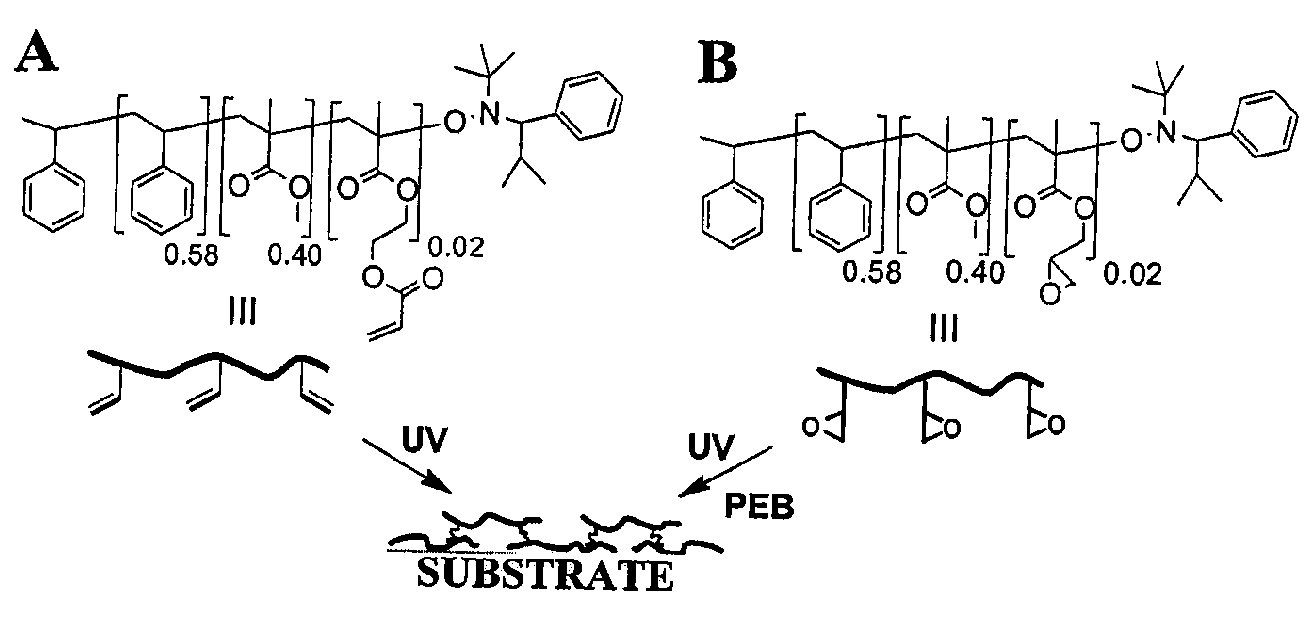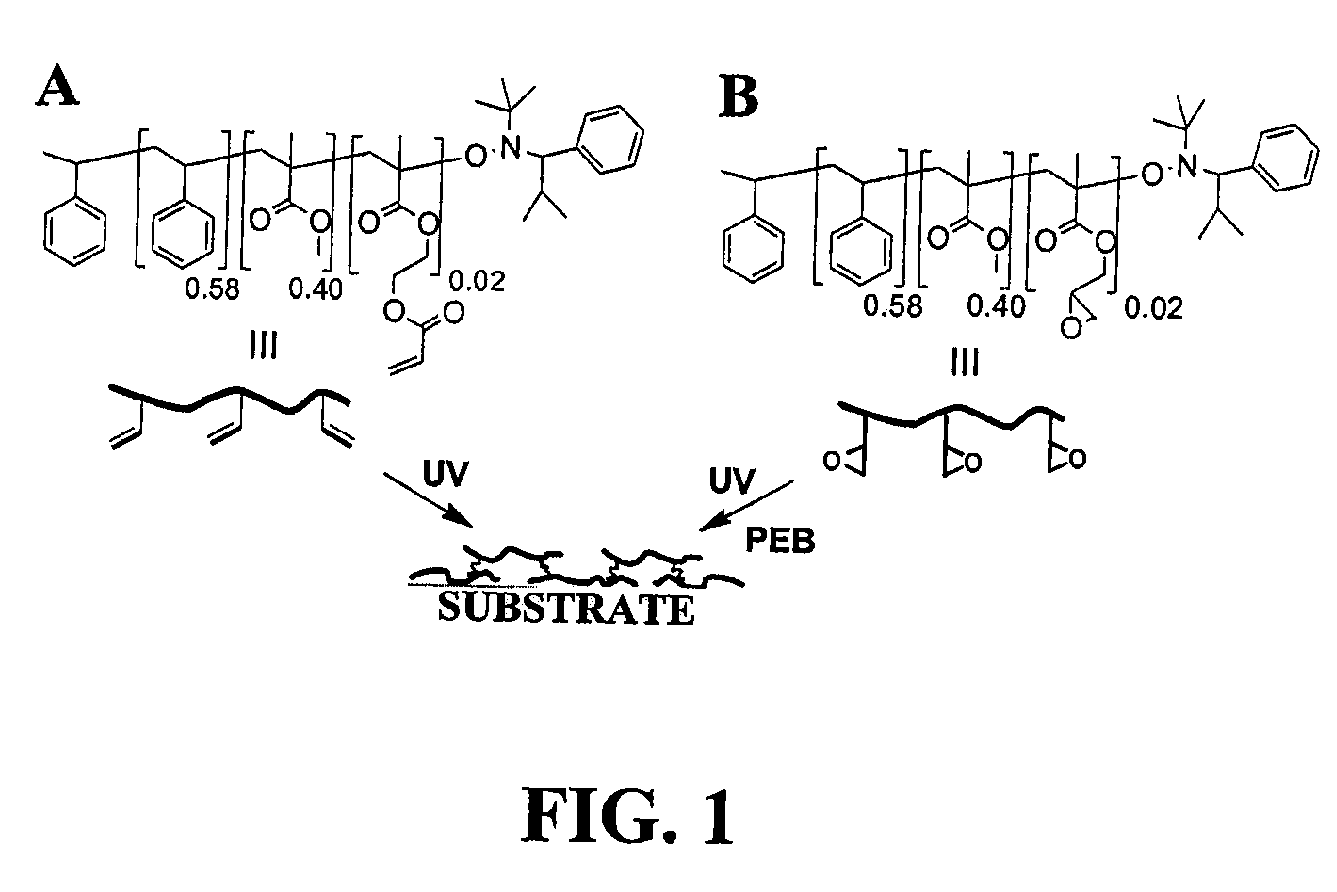Photopatternable imaging layers for controlling block copolymer microdomain orientation
- Summary
- Abstract
- Description
- Claims
- Application Information
AI Technical Summary
Benefits of technology
Problems solved by technology
Method used
Image
Examples
example 1
Orientation of Symmetric Diblock Copolymers on Crosslinked Copolymer Films Formed from Random Copolymers Containing Either Acryloyl Groups or Glycidyl Groups
[0027]In the acronyms used below, “P” stands for polymer, “H” stands for HEMA, “A” stands for acryloyl, “G” stands for glycidyl and “2” represents the mole % of H, A, or G in the copolymer.
[0028]Materials. P(S-r-MMA-r-HEMA) (PH2) was synthesized by the previously reported method in Ryu et al., Science 2005, 308, 236. PA2 was synthesized by the esterification of PH2 in anhydrous THF with excess acryloyl chloride using triethyl amine as a base. PG2 was synthesized by a similar procedure as PH2 by using glycidyl methacrylate (GMA) instead of HEMA as a comonomer. The resulting highly viscous mixture was diluted with THF and precipitated into methanol. The precipitate was filtered and dried under reduced pressure to obtain PA2 (Mn 27 000, PDI 1.18) or PG2 (Mn 31 000, PDI 1.24) copolymer as a white solid.
[0029]A symmetric poly(styrene...
example 2
Orientation of Asymmetric and Symmetric Diblock Copolymers on Crosslinked Copolymer Films Formed from Random Copolymers Containing Either Hydroxyl Groups or Glycidyl Groups
[0040]The phrase “perpendicular window” below refers to the composition range (as measured by the actual styrene fraction, FSt) of the random copolymer that is capable of orienting block copolymer domains perpendicular to the surface.
[0041]Materials. Styrene (St), methyl methacrylate (MMA), glycidyl methacrylate (GMA) and 2-hydroxyethyl methacrylate (HEMA) were purchased from Aldrich and distilled under reduced pressure. Initiator I,23 and initiator II24 were synthesized according to the literature. Ghani, M. A. A. et al., Canadian Journal of Chemistry-Revue Canadienne De Chimie 2004, 82 (9), 1403-1412; and Benoit, D., et al., Journal of the American Chemical Society 1999, 121 (16), 3904-3920. Three block copolymers were purchased from Polymer Source Incorporated (Dorval, Quebec, Canada) and used without further p...
PUM
| Property | Measurement | Unit |
|---|---|---|
| Fraction | aaaaa | aaaaa |
| Thickness | aaaaa | aaaaa |
| Nanoscale particle size | aaaaa | aaaaa |
Abstract
Description
Claims
Application Information
 Login to View More
Login to View More - R&D
- Intellectual Property
- Life Sciences
- Materials
- Tech Scout
- Unparalleled Data Quality
- Higher Quality Content
- 60% Fewer Hallucinations
Browse by: Latest US Patents, China's latest patents, Technical Efficacy Thesaurus, Application Domain, Technology Topic, Popular Technical Reports.
© 2025 PatSnap. All rights reserved.Legal|Privacy policy|Modern Slavery Act Transparency Statement|Sitemap|About US| Contact US: help@patsnap.com



